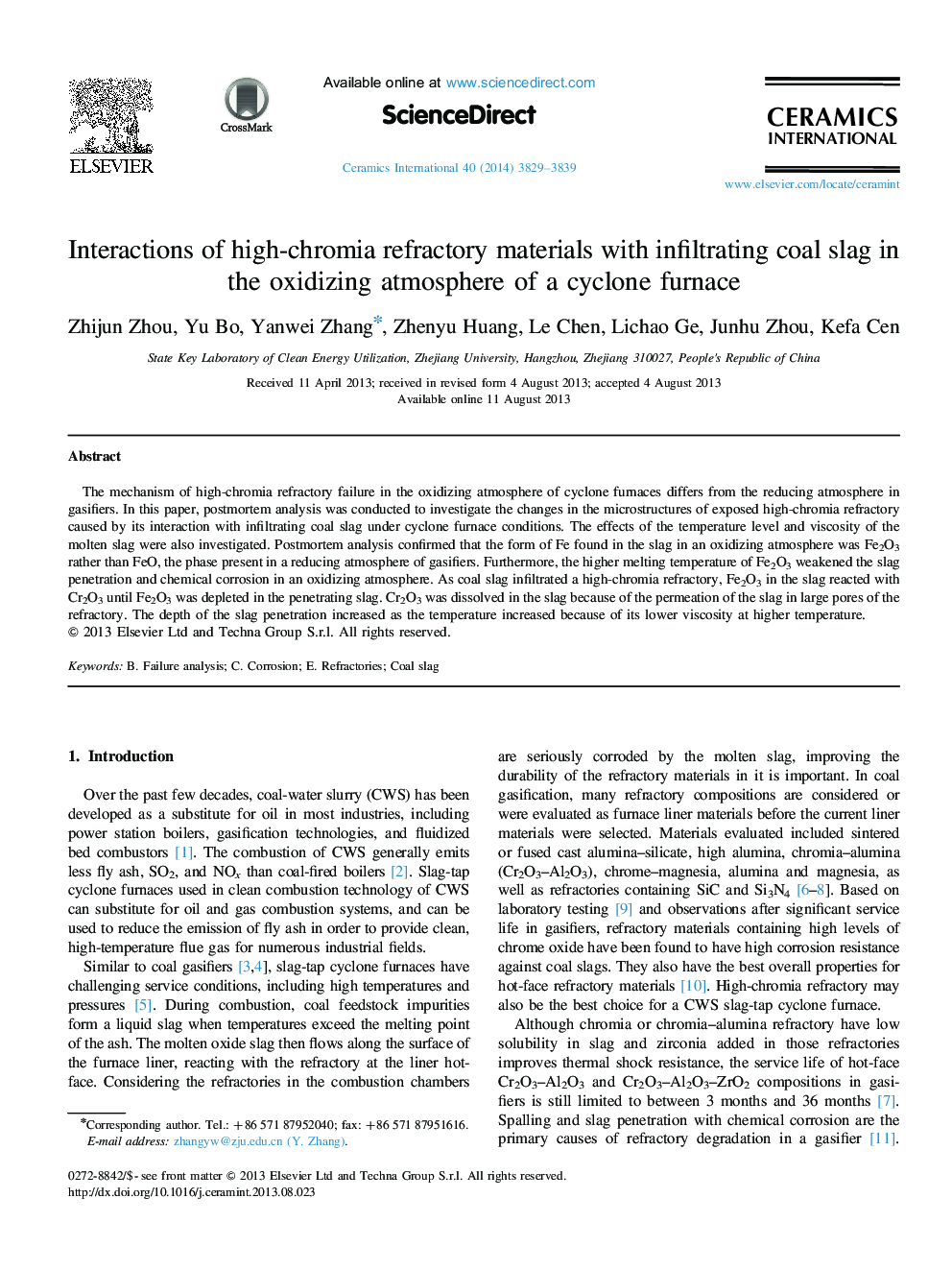| Article ID | Journal | Published Year | Pages | File Type |
|---|---|---|---|---|
| 1461395 | Ceramics International | 2014 | 11 Pages |
The mechanism of high-chromia refractory failure in the oxidizing atmosphere of cyclone furnaces differs from the reducing atmosphere in gasifiers. In this paper, postmortem analysis was conducted to investigate the changes in the microstructures of exposed high-chromia refractory caused by its interaction with infiltrating coal slag under cyclone furnace conditions. The effects of the temperature level and viscosity of the molten slag were also investigated. Postmortem analysis confirmed that the form of Fe found in the slag in an oxidizing atmosphere was Fe2O3 rather than FeO, the phase present in a reducing atmosphere of gasifiers. Furthermore, the higher melting temperature of Fe2O3 weakened the slag penetration and chemical corrosion in an oxidizing atmosphere. As coal slag infiltrated a high-chromia refractory, Fe2O3 in the slag reacted with Cr2O3 until Fe2O3 was depleted in the penetrating slag. Cr2O3 was dissolved in the slag because of the permeation of the slag in large pores of the refractory. The depth of the slag penetration increased as the temperature increased because of its lower viscosity at higher temperature.
